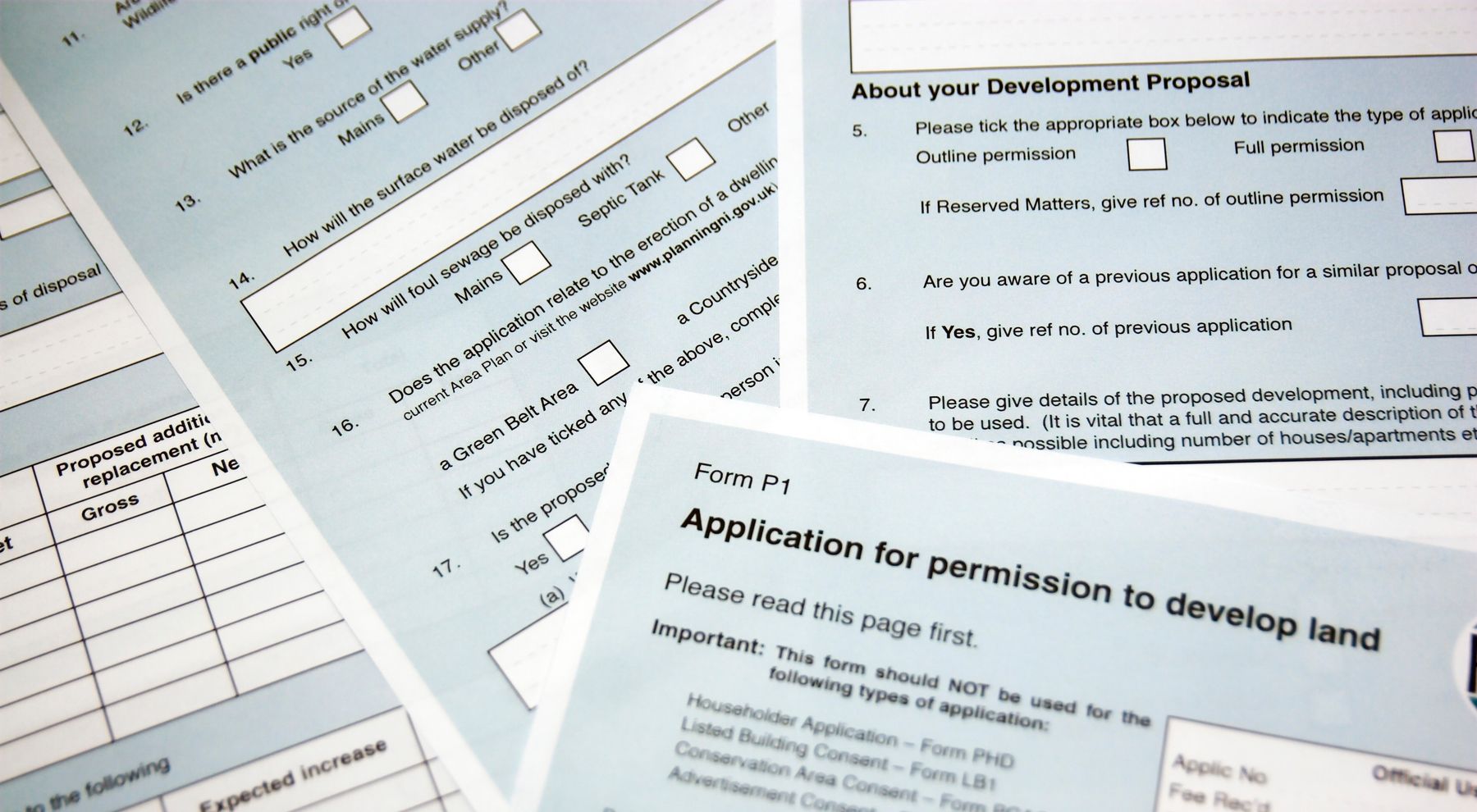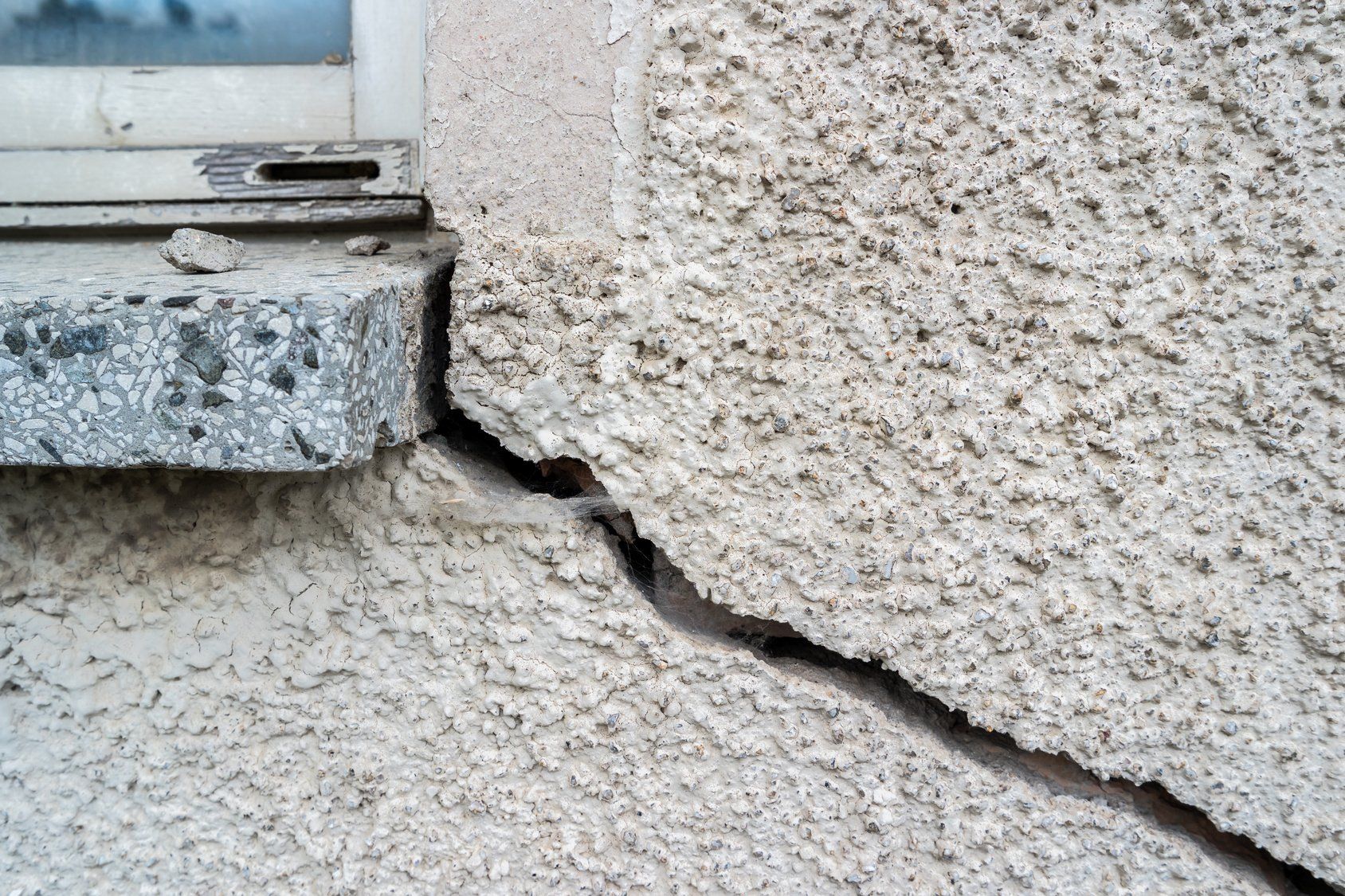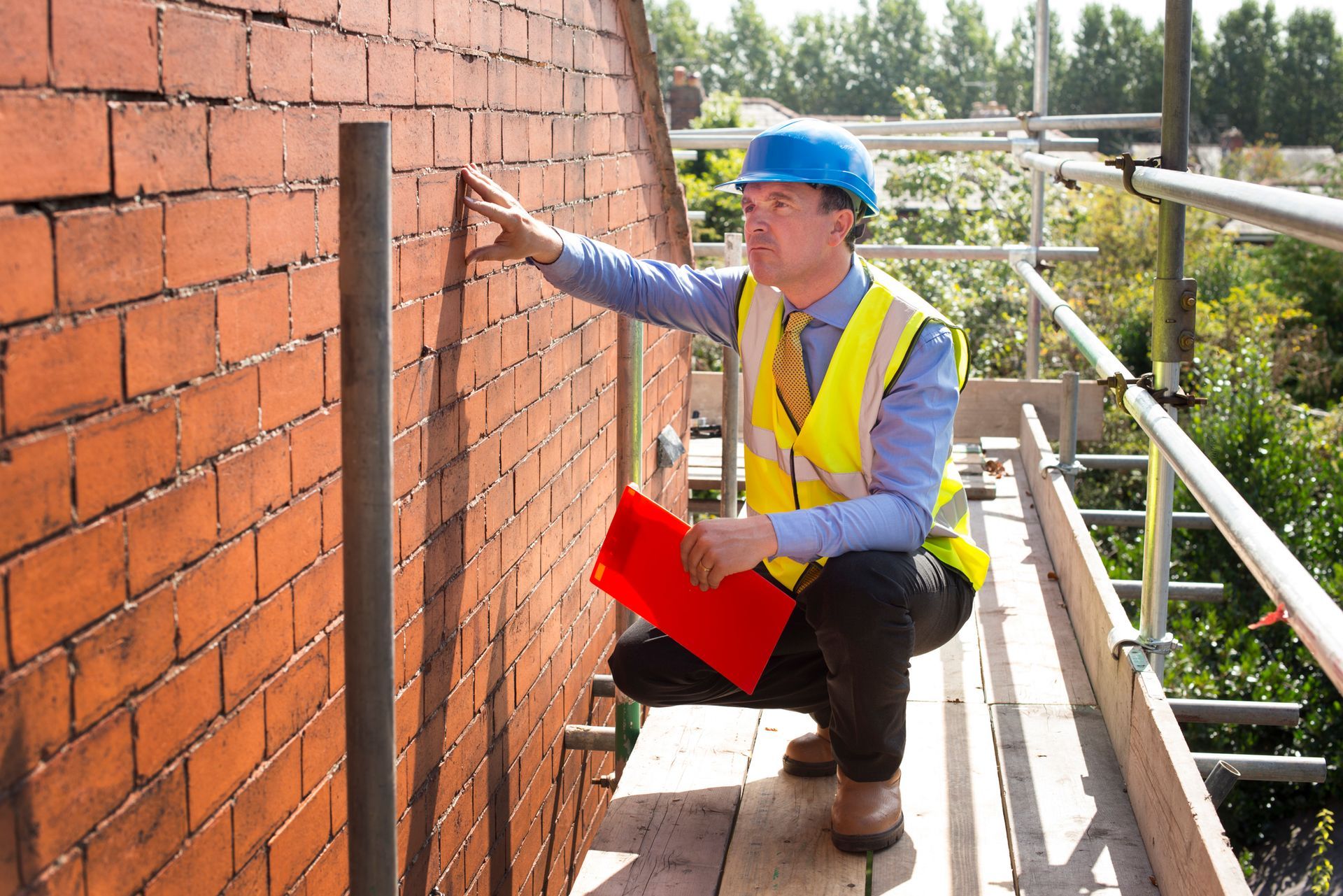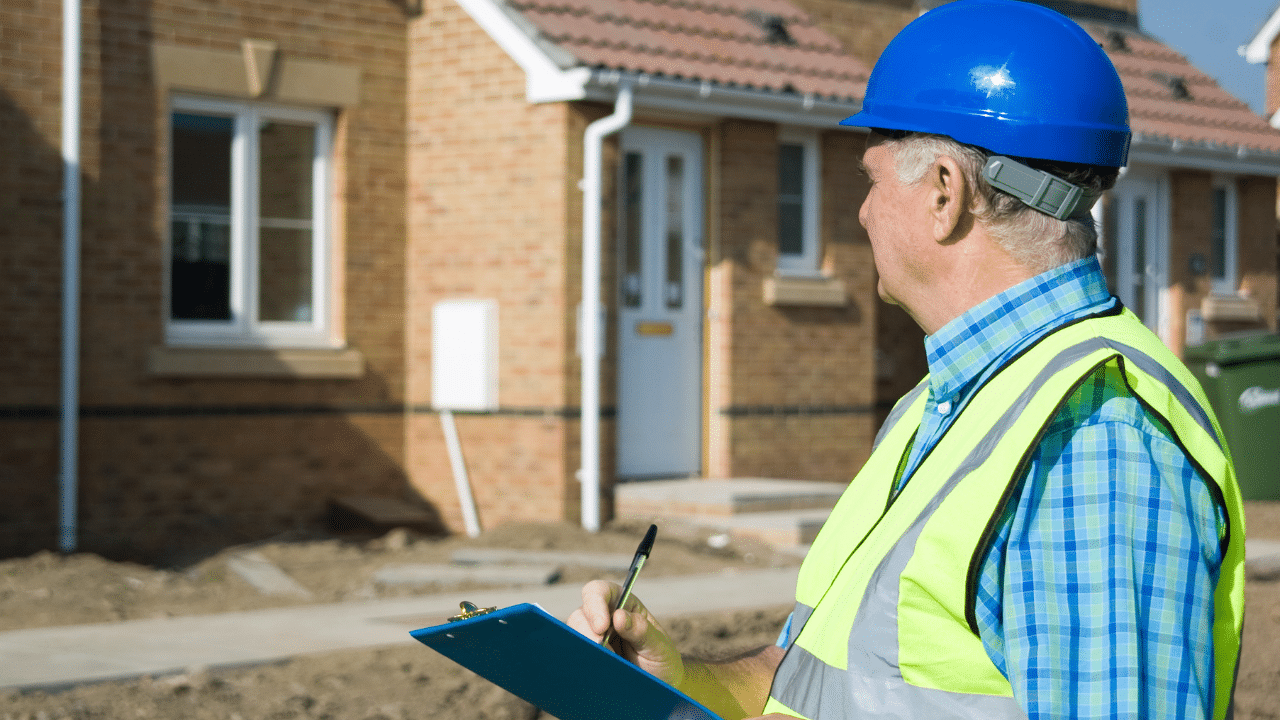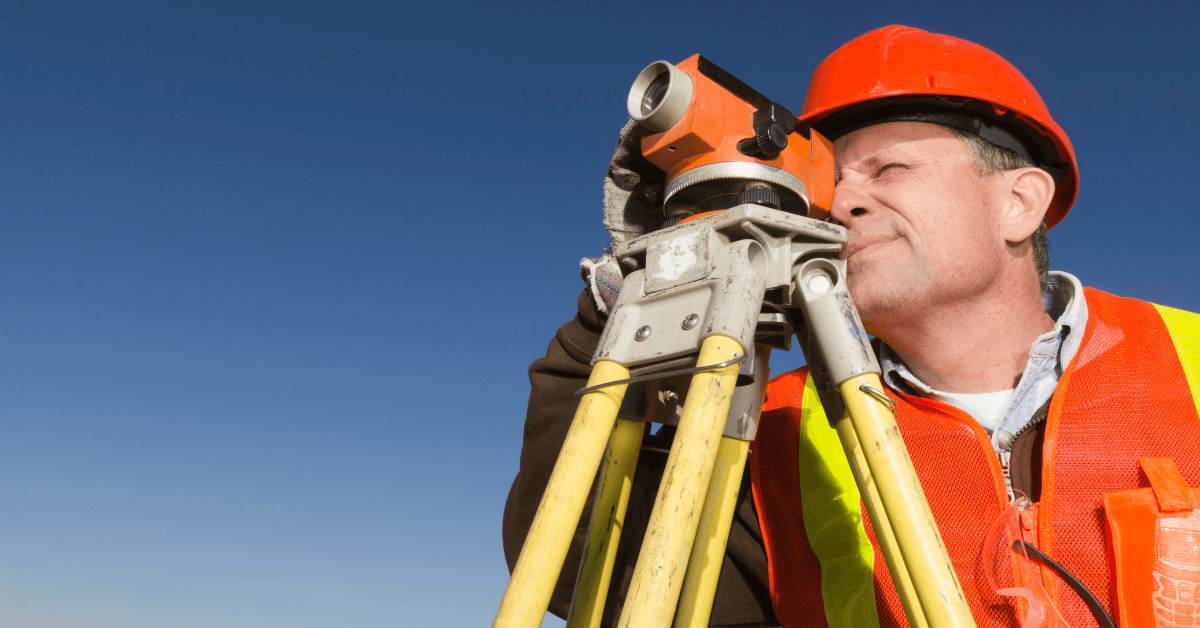Common Defects a Structural Surveyor Looks for & How to Avoid Them

You may already be familiar with house surveys when purchasing a property. A full house inspection helps buyers get the full picture of the property’s condition so they can make informed decisions and potentially negotiate on price.
When you’re on the other side as a seller, the prospect of a buyer conducting a structural survey can seem daunting. You may worry about what the inspection might uncover. But don’t panic, our guide is here to walk you through the common defects a structural surveyor will be looking for and how you can prevent them from being an issue.
Are all homebuyer surveys the same?
When purchasing a property, buyers aren’t legally required to arrange a homebuyer’s survey. However, it can be incredibly beneficial in highlighting any potentially costly problems with the property’s condition.
There are different survey levels, starting with a Level 1 Survey (Condition Report). This is a basic visual inspection, suitable for new-build homes. A Level 2 Survey (Homebuyer’s Report) is the most common, offering more details on the property’s condition.
The most comprehensive report is a Level 3 Survey (Building or Structural Survey), which provides an extensive review of the property’s condition, along with an estimate of repair costs. We recommend this type of property inspection for homes over 50 years old and those that have undergone significant renovations.
Learn more about the difference between Level 2 and Level 3 surveys.
Why it’s important to be aware of what a property inspection will cover
If you’re selling a property, it’s important to remember that your buyer may decide to choose a Level 3 property purchase survey. Knowing what this covers can help you carry out any repairs or alterations to mitigate any problems a structural surveyor may pick up on.
You may find you need to pay for some repairs ahead of the sale. However, these are often less than the amount you could lose if a buyer tries to negotiate a lower price.
Common defects structural surveyors look for — and how to avoid them
Structural surveyors are trained to spot issues that could pose any health or safety risks, signs of illegal alterations, and problems that could lead to costly repairs.
Here are a few building defects that could be highlighted during a Level 3 property survey:
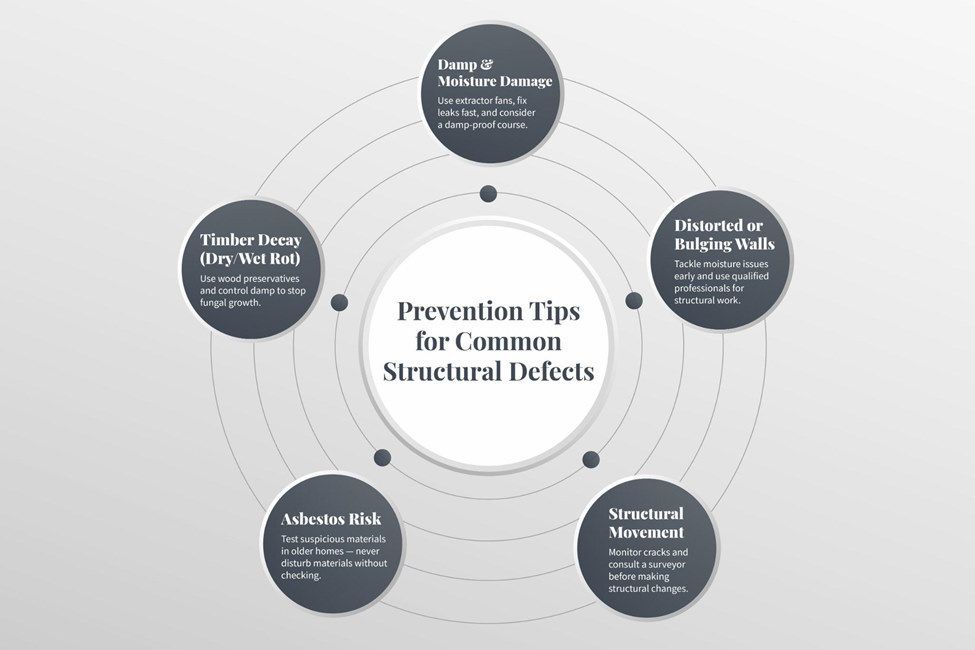
1. Damp and moisture damage
Damp isn’t always immediately obvious, but it can cause structural damage and have a negative impact on your health if left untreated. Dampness can stem from unsealed foundations (rising damp), leaks, gaps in the roof, or poor ventilation.
How to prevent damp and moisture damage
Damp and moisture tend to build up over a long time, so the best way to limit damage is to:
● Regularly check pipes and your roof space for any leaks, and get them fixed quickly
● Use an extractor fan or dehumidifier in moisture-prone rooms, like the bathroom or kitchen, especially in winter
● Avoid drying laundry indoors
● Open windows regularly to allow air flow
● Consider a damp-proof course
2. Distorted walls
Sometimes, damp, moisture or poor installation can cause walls to bulge or become distorted. If the bulging is significant, it could be a sign of subsidence, which may put the wall’s structural integrity into question.
How to minimise wall distortion or bulging
Keep on top of any damp or moisture issues to avoid this leading to wall damage. It’s also important to make sure that any structural work, whether it’s an extension or wall alteration, is carried out by a qualified professional who will use the best materials and techniques.
Always get early signs of wall distortion checked as soon as possible.
3. Structural movement
This type of issue may present as wall bulging, but you may also find that structural movement leads to cracks, uneven flooring, or misaligned doors and windows.
Structural movement can be caused by external factors, such as living near a busy road or construction site. Sometimes, it’s due to shifting soil or foundations, and in some cases, it’s simply down to the age of the building.
How to limit structural movement damage
Regular inspections are the best way to prevent structural movement from causing expensive damage. Keep an eye on any cracks or noticeable shifts and get them checked as soon as possible, especially if they seem to be widening.
If you plan to make any structural changes, such as removing a wall, make sure there is enough support and always hire a qualified professional to carry out the work.
4. Asbestos
Although a building survey won’t include a full asbestos report, your surveyor may note any suspicions of asbestos. This material was commonly used as a building material until it was banned in the 1990s. When disturbed, it can pose health risks.
Some older properties, particularly those with textured wallpaper or artex ceilings, may contain asbestos. Structural surveyors may suggest further investigation if they believe your property could contain asbestos.
How to deal with asbestos
If you live in a property that was built or decorated before the 1970s, it’s worth sending a sample of any suspicious materials for testing. If it does contain asbestos, additional safety precautions will need to be taken when removing the material.
5. Timber decay
Timber foundations, roof components, and other structural elements can be affected by dry or wet rot (fungal infections), which can lead them to decay. Signs include visual fungal growth, a musty smell, and weakening beams or floorboards.
How to prevent timber decay
If you spot any signs of timber decay, seek treatment right away to prevent it from spreading or causing structural damage. An expert will be able to apply chemicals to kill the fungus and, if there’s already any damage, they may need to replace the timber.
As a preventative measure, we recommend making sure any timber components are treated with wood preservatives and that you limit the risk of dampness, which can encourage fungal growth.
Should you appoint a structural surveyor when selling a property?
While structural surveys are often seen as a buyer’s responsibility, it can also be worthwhile to arrange one before putting your property on the market.
It will give you the chance to address any issues before they cause real damage, and help you feel confident knowing your home is market-ready and worth the asking price.
If you’re planning to put your home on the market in Hertfordshire, get peace of mind with a full Level 3 house inspection from our RICS-registered surveyors.
Contact Simon Levy to learn more.
